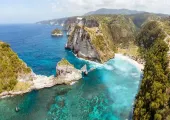11 Traditional and Fun Things to Do in Nara
Catalogue
- Kohfukuji
- Gangō-ji
- Todaiji
- Himuro Shrine
- Kasuga Grand Shrine
- Yakushi Temple
- Toshodaiji Temple
- Mount Wakakusa
- Nara Park
- Mount Yoshino
- Chikurinin
Show More
The ancient city of Nara, which was Japan’s capital from 710 A.D to 794 A.D, is one of the major tourist destinations in Japan. Known for its tame deer, which roams freely in the city, there are a lot of things to Do in Nara. After Kyoto and Tokyo, which are a major tourist destination in Japan, your next stop should be Nara as the city has lots to offer for the tourist. Nara will allow you to explore Japan’s ancient past, making it a unique experience. It has huge Buddhist temples and beautiful Shinto shrines that have survived through ages giving you a glimpse of Japan’s former glory. With lots of temples and shrines mapped on Nara Map, you can explore the spiritual side of you. Nara is not known for only their temples but is ideal even for nature lovers as it is surrounded by beautiful and is full of cherry. Even nature and wildlife enthusiasts have enough things to Do in Nara to make their holiday perfect.
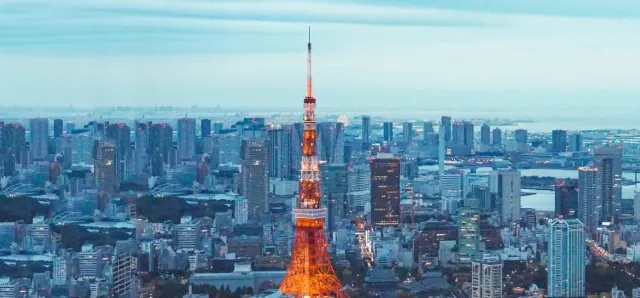
In case you are planning to visit the Kansai area in Japan, you can play a tour to Nara as part of your itinerary. We have compiled a list of some of the Best Things to Do in Nara to make your visit memorable.
The ancient temple located inside the Nara Park boasts of being a powerful temple during the Kamakura Period. This temple is listed as one of the Seven Great Temples of Nara. With a history that is more than 1300 years old, it is one of the important ancient temples of Japan. The Khukuji temple houses many important cultural properties and national treasures of Japan.
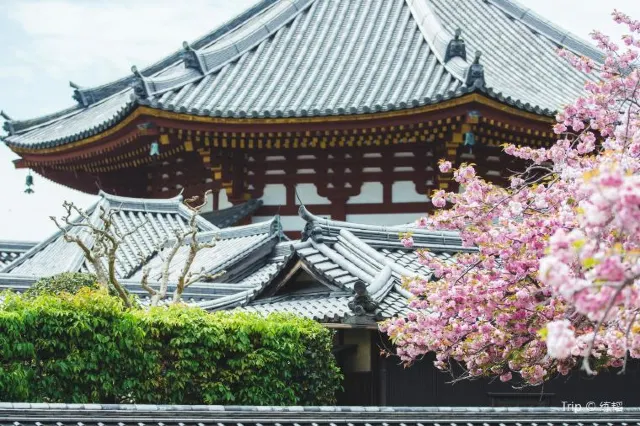
Don’t miss out to explore the eastern Golden Hall, which is designated as Japan’s National. Inside the hall are four National Treasure and 2 cultural properties of Japan; one of them is the copper image of Yakushi Nyorai. The major highlight of this temple is the five-storied Pagoda, which is the symbol of Nara. The existing Pagoda, which was rebuilt in 1426, was burned and destroyed multiple times before that. It had still managed to retain the features when it was first built. When there do not miss out on the reflection of Pagoda on the Sarusawa Pond, capturing the picture of the reflection on the camera is one of the things to Do in Nara. The three-storied pagoda, which was erected in 1143, is also a National Treasure of Japan. It is one of the oldest structures of Kohfukuji, which stands at the height of 19.1 meters. One should not miss out on the Northern Round Hall, which is considered as one of the most beautiful structures. The structure which was destroyed and rebuilt around 1210 has retained the original design.
It is open daily from 9 am to 5 pm, and the entrance fee for this place is between 100 Yen to 300 Yen depending on the age group.
Gango-Ji was founded in the late 6th Century by Soga no Umako, and it is one of the few temples of Japan that has retained the architecture from the 710-719 AD Nara period. It was built to pray for the glory of the Sago family but later became a state-sponsored temple when it shifted to Heijyo-Kyo. The locals referred to this Hoko-Ji temple as Asuka-Dera as it originated and later moved to the present location in 718 AD. The main hall contains one of the major cultural treasures, the oldest Buddha statue in Japan, the Buddha of Asuka-Dera. With world-class heritage status given to 8 of its properties, visiting Gango-Ji is one of the things to Do in Nara.

The highlights of the Gango-Ji temple are the space in the temple ground, which covers the historical space of Gangoji Gokuraku-bo, remains of the living quarters of the Buddhist Priest, the main hall of Gokuraku-do Hall and the Gokuraku-bo Zen Room all these are the national treasure of Japan. The Chiko Mandala Shari Zushi, which is a shrine to preserve Buddha’s ashes, Kenpon Chiko Mandala, and the wooden statue of Amitabh, are some of the important cultural properties of Japan which are housed here.
It is open daily from 9 am to 5 pm, and the entrance fee for this place is between 100 Yen to 600 Yen depending on the age group. There are discounts for large groups.
The Todaiji is an epic Buddhist temple and is also historically the most significant temples of Japan. This temple was constructed as the head of Buddhist temples in 752 AD. As time went by, the temple became powerful enough to take the administrative decisions in the government. In 784 AD, they had to move the capital to Nagaoka to lower the temple’s influence on the administrative affairs of the government. The present main is the reconstructed one, which happened in 1709 AD and is almost 30 percent small than what it was originally.
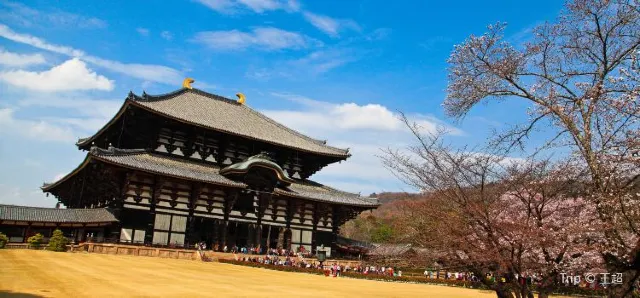
Till 1998 this temple held the record of the largest wooden building in the world. One of the significant artifacts is the statue of Buddha, which is the world’s biggest bronze statue of Buddha. The statue is 15 meters high and weighs more than 500 tons. This statue is believed to have bankrupted Japan’s economy in 752 A.D by the time it was finished. Seeing the statue is certainly one of the things to Do in Nara. There are more Buddhist statues former building models on display in Daibutsden Hall. Another popular attraction here is a pillar with a hole, which is of the size of the Buddha Statue’s nose in its base. The popular belief is that the one who can manage to get through the opening will get enlightenment in their next life.
From April to October the hall is open from 7:30 am to 5:30 pm, and during other months it is open from 8:00 am to 5:00 pm. The entrance fees are 600 yen.
Himuro means ice room is an ice house dedicated to the deity Himuro Myojin. It was built in 710 at the foot of Mount Mikasa upstream of the river Yoshiki. In the year 1217, it was moved to the present location, after which the pillar of the shrine was constructed. Annually between April to September, the Ice in the ice house was offered to the Imperial court. As per the shrine records, an imperial festival to honor the ice was first done in 711 A.D, after which it became an annual event. This celebration stopped during the Helan period, and recently it has been revived and held on the first of May.

The highlights of this shrine are the ice lantern known as Koori Kenton lit first of every month. Within the ice vessels, the votive candles are lit, and they shine beautifully around the shrine. These lanterns and lamps are a beauty to behold; capturing a picture of this beauty is one of the things to Do in Nara. Cherry trees surround the shrine, and if you visit during early April or late March, you will get to see Cherry Blossom, which is breathtaking.
The shrine is open all year long; the timing from April to October is 6:00 am to 6:00 pm, and November to March is 6:30 am to 5:30 pm. There is no entrance fee here.
Kasuga Taisha, which was built when Nara became the capital, is one of the most celebrated shrines in Japan. This shrine is dedicated to the deity who is believed to protect the city. This shrine, just like Ise Shrines, has been built periodically over 20 years, continuing for many centuries. At the end of the Edo period, this custom was discontinued.
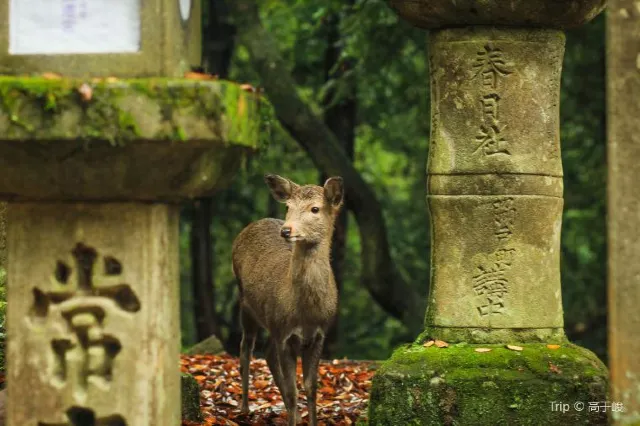
The main sanctuary of this shrine contains many multiple Kasuga style shrine buildings. The main characteristic of this architecture is the sloping roof, which extends over the front side of the building. This shrine is famous for the bronze lanterns donated by many worshipers. These lanterns can be seen hanging from the building. There are many stone lanterns found at the approach of the building. These lanterns are lit only during the lantern festival that happens twice a year during February and August. Visiting this shrine during this festival is one of the things to Do in Nara. There are some Auxiliary Shrines which are there in the woods around Kasuga Grand Shrine. The Wakamiya Shrine, which is known for its dance festival, is an important cultural property of Japan.
The shrine is accessible from 6.30 am to 5.30 pm from April to September and from 7:00 am to 5:00 pm from October to March. There is no entrance fee for the outer area, but for the inner area, it is 500 yen.
Yakushi was constructed for the recovery of the emperor’s sick wife by the Emperor named Tenmu during the late seventh century. The architecture of Yakushiji is a symmetrical layout, the lecture hall and the main hall are residing on an axis which central with pagodas on either side. The temple's main hall, which was destroyed during the fire, has been rebuilt during1970s. The Pagoda on the East is the only structure that dates back to 730 A.D and has survived countless fires that the temple has seen over many years.
The main hall has the Yakushi Trinity, which is considered as the masterpiece of Buddhist art from Japan. The Genjo Sanzoin Garan, which was constructed in 1991 and is located on the main temple complex towards the north area, is dedicated to monk Genjo Sanzo from China. He lived during the seventh century and is well known for his travels to Central Asia and India. It is said that Genjo Sanzo’s some of the remains are present here. There are paintings by Japan’s famous painter Hiyama Ikuo depicting the monk’s journey. The complex is not open all year and can be accessed only during a few months. Visiting this temple when the Genjo-Sanzoin Garan is open is a must among the things to Do in Nara.
The Genjo Sanzoin Garan is closed from mid-January to February and from July to mid-September, and in December, the rest of the temple is open throughout the year. The Admission fee is 1100 yen when Genjo-Sanzoin Garan is open and 800 yen otherwise.
The Toshodaiji temple was founded by the Chinese priest Ganjin in 759 AD. Gajnin is credited for influencing and introducing Buddhism to Japan. After being renovated, which happened over 10 years, the main hall was re-opened in 2009. The lecture hall of the temple is the only surviving building of the Nara Imperial Palace.
One of the main attractions is the famous statue of Ganjin made of wood. This statue is displayed only once a year for a few days around Ganjin’s death anniversary, which is 6th June. A replica of this statue has been kept on permanent display since 2013, marking the 1250th anniversary of his death. The grave of Ganjin is located on the temple covered with thick foliage. Visiting his grave is one of the things to Do in Nara as the nature surrounding it gives the atmosphere of serenity.
The visiting hours are from 8:30 am to 5:00 pm all year round, and the admission fees are 600 yen and an additional 200 yen if you want to visit the treasure house.
Behind Nara park and located between Kasuga Shrine and Todaiji Temple is the grass-covered mountain Mount Wakakusa. The mountain, which is 350 meters tall, gives a beautiful and unobstructed view of Nara City. Climbing Mount Wakakusa is one of the things to Do in Nara.
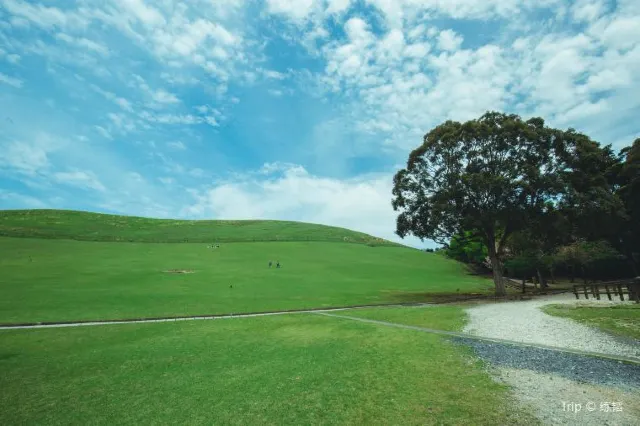
If you visit during early April, the cherry trees lining the grassy slope is in full bloom giving a picture-perfect view to capture on your camera. It takes around 15 to 20 minutes to reach a plateau from where the view of the city is beautiful. To reach the mountain’s peak, it will take an additional 20 to 30 minutes. Most of them usually never go beyond the plateau area. During the fourth Saturday of January every year, the slopes of the mountain are burned during Wakakusa Yamazaki. The reason for this event is not clear though there are multiple theories, one theory states that it is to drive away wild boars, whereas other theory states that it started due to a dispute. A spectacular fireworks display follows the burning.
The mountain is closed in winters from mid-December to late March, rest of the days it is open from 9:00 am to 5:00 pm with admission fees of 150 Yen.
Located in central Nara is the large Nara Park. It was established in 1880, and it is the place where Nara’s main attractions like the Nara National Museum, Kasuga, Todaiji, Taisha, and Kukuji is located. It is a home of the Nara Deer, where hundreds of them roam freely.
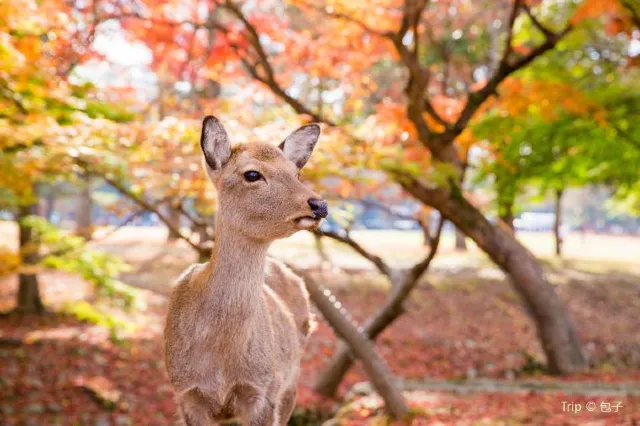
The Nara Deer are considered as the messengers of Gods; the cities over a thousand deers are considered a symbol of the city and have been considered as a natural treasure of Japan. You can buy deer crackers that are available around the Nara Park and feed the deer roaming there. Feeding the deers of Nara Park is one of the things to Do in Nara. Some deer ask to be fed by bowing to the visitors, something which they have learned over time. They are usually tame but can get aggressive if they are teased with food.
Nara Park is open all day long, so there are no visiting hours. There are no admission fees, as well.
Mount Yoshino has the most popular and famous cherry blossom viewing spot in Japan for many centuries. Some say that the first trees were planted more than 1300 years ago. In the present day, the mountain is covered by more than 30,000 varieties of cherry trees.

Mount Yoshino, which is the North-facing slope, is divided into four areas. The Shimo Senbon, Naka Shenbon, Kami Senbon, and Oku Senbon. The cherry blossom starts in early April or late March and is in full bloom by the end of April. The tourist can enjoy the cherry trees along with hanami and viewpoints while ascending the mountain. At the top is the Naka Senbon Park, which is an attractive spot for hanging out. Having a hanami picnic under the tree is a must among things to Do in Nara. The park is spread across many hills covered with cherry trees and gives the best views of the tree. During good weather, it is a delightful atmosphere here.
On the border of Kami Senbon and Naka is a Buddhist temple Chikurin-in on the area of Mount Yoshino. Previously this temple used to be an accommodation for Shugendo mountain worship practitioners; these days, it also serves as an Inn for all kinds of travelers. Staying in Chikurin-in is one of the things to Do in Nara. You will have to book in advance as it gets booked out during the cherry blossom season.
This temple has some beautifully landscaped gardens designed by the famous tea master Sen-no-Rikyu. It is surrounded by a large pond which is lined by cherry trees also open for the visitors. The walking trails will take you to the archery ground on the hill behind. Here you will find viewpoints from where you can see the mountain slopes to the temple of Kinpusenji.
Nara is a beautiful place that will appeal to young and old alike, making it an ideal vacation for the family. With so many things to Do in Nara, make sure that you plan and book everything well in advance. The best time to visit Nara is during the cherry blossom season when there is beauty all around. So, pack your bags to visit this amazing part of unseen Japan.
Trending Travelogues
Popular Trip Moments
Popular Travel Types
Popular Attractions
Popular Ranked Lists
Popular Destinations
Recommended Attractions at Popular Destinations
About











Site Operator: Trip.com Travel Singapore Pte. Ltd.



